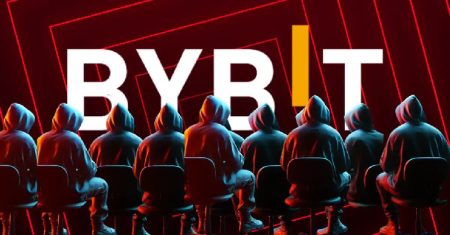The State of Digital Asset Security in 2024: A Comprehensive Overview
1. The Ransomware Landscape: A Year of Decline but Persistent Threats
In 2024, the digital asset space experienced a notable shift in ransomware trends, with attackers netting $813.55 million, a significant drop from the $1.25 billion plundered in 2023. This 35% decline, as reported by Chainalysis, marks the first drop in ransomware-related losses since 2022. The reduction is attributed to improved collaboration between law enforcement agencies and victims’ increasing reluctance to negotiate with attackers. The second half of 2024 saw a steep decline, with threat actors securing nearly $500 million by June. Notable incidents included the $100 million payment to the Dark Angels syndicate and Akira, highlighting the lingering impact of high-profile ransomware attacks.
However, the decline is not without context. The collapse of major ransomware syndicates like LockBit and BlackCat left a vacuum, with no significant B-list players emerging to take their place. Instead, attackers adopted a more fragmented approach, operating in isolated and uncoordinated events. A significant portion of attacks originated from data leak sites, which saw a surge in activity compared to previous years. Analysts like Coveware’s Lizzie Cookson noted that the ransomware ecosystem is increasingly dominated by newcomers targeting small to midsize organizations, resulting in more modest ransom demands. Despite the decline, Chainalysis predicts a resurgence of activity in 2025 as attackers adapt and evolve their strategies.
2. The SparkCat Malware: A Rising Threat to Digital Wallet Security
A parallel threat emerged in 2024 in the form of SparkCat, a sophisticated malware campaign targeting digital asset wallet recovery phrases through mobile applications on both Android and iOS devices. Identified by cybersecurity firm Kaspersky, SparkCat gained significant traction, evolving from a 2023 technique into a formidable force. The malware operates by scanning image galleries for sensitive information and sending the data to remote servers.
SparkCat leverages a compromised software development kit (SDK) in select mobile apps, employing an optical character recognition (OCR) model to extract wallet recovery phrases. The campaign’s reach expanded beyond unofficial app stores, with malicious applications found on Google Play and Apple’s App Store. Over 250,000 downloads were reported, marking the first time a “stealer” has been identified on the App Store. The malware gained notoriety in March 2024 after infecting the Asian-based food delivery app ComeCome.
The SparkCat campaign underscores the growing sophistication of malicious actors, who are increasingly incorporating AI and ML tools into their operations. For instance, the malware’s Android and iOS versions rely on Google’s ML Kit library for OCR functionality. Experts like Hacken’s Stephen Ajayi highlighted the clever use of OCR and AI to automatically detect and extract sensitive information from images or screens. Beyond food delivery apps, SparkCat has infiltrated messaging and AI-themed applications, employing code obfuscation and malicious updates post-app approval.
3. The Evolving Threat Landscape: AI and Cybersecurity in 2024
The digital asset space in 2024 was characterized by a rapidly evolving threat landscape, with emerging technologies reshaping both attack and defense strategies. Analysts observed a growing use of AI and machine learning (ML) tools in malware, presenting new challenges for cybersecurity teams. For instance, ransomware strains now often incorporate rebranded, leaked, or purchased code, allowing attackers to adapt and innovate at a faster pace.
State-backed groups, particularly from North Korea and Russia, continued to play a significant role in ransomware attacks, exploiting vulnerabilities in the digital asset ecosystem. The rise of ransomware-as-a-service (RaaS) further expanded the threat landscape, enabling even non-technical attackers to launch sophisticated campaigns. Decentralized finance (DeFi) players, on the other hand, have begun exploring AI-based security measures to counteract these threats, achieving notable successes in mitigating risks.
The interplay between attackers and defenders has never been more dynamic. As threat actors innovate, cybersecurity teams are forced to stay one step ahead, developing countermeasures to address the growing complexity of attacks. The integration of AI and ML into both offensive and defensive strategies highlights the transformative potential of these technologies in the realm of digital security.
4. The Decline of Crypto Mixers and the Role of Centralized Exchanges
Despite the overall decline in ransomware losses, attackers continued to rely on centralized exchanges, bridges, and personal wallets to launder stolen funds. However, 2024 marked a significant slump for mixers, with these services holding only a 15% market share of laundered digital assets. The diminished reliance on mixers reflects heightened regulatory scrutiny and law enforcement efforts to track and recover stolen funds.
Many ransomware gangs opted to hold onto their digital assets rather than cash out, likely in response to increased law enforcement activity. This trend suggests a growing uncertainty among attackers about the safety and viability of traditional laundering methods. While centralized exchanges remain a key channel for illicit transactions, the decline of mixers indicates a shifting landscape in which attackers must continuously adapt to evade detection.
5. Lessons from the past: Historical Context and Future Implications
The digital asset space has long been a target for malicious actors, with malware attacks becoming increasingly common in recent years. Since 2020, the combined value of malware attacks on digital wallets has exceeded $1 billion, underscoring the persistent threat posed by these campaigns. In 2022, incidents like PennyWise and Infamous Chisel highlighted vulnerabilities in the Chromium-based ecosystem, while 2023 saw the emergence of new threats that kept security agencies on high alert.
The SparkCat campaign serves as a stark reminder of the evolving nature of these threats. By targeting mobile applications and leveraging AI-driven tools, attackers are exploring new vectors to exploit user vulnerabilities. The success of such campaigns underscores the importance of proactive measures to safeguard digital assets. As the threat landscape continues to evolve, consumers and developers alike must remain vigilant.
6. The Ongoing Battle Between Attackers and Defenders
The digital asset space remains a highly contested battlefield, with attackers and defenders locked in a relentless cycle of innovation and adaptation. While ransomware losses have declined, the emergence of new threats like SparkCat underscores the persistent risks facing users. Cybersecurity firms and law enforcement agencies have made significant strides in combating these threats, but the adaptability of attackers ensures that no solution is permanent.
To mitigate these risks, users must adopt best practices, such as exercising caution when granting app permissions and securing wallet recovery phrases. Developers, on the other hand, are urged to enhance security measures, particularly around seed phrase protection. As the threat landscape continues to evolve, collaboration between stakeholders will be crucial in safeguarding the digital asset ecosystem. The battle between attackers and defenders is far from over, but the lessons of 2024 provide a clear roadmap for addressing future challenges.















